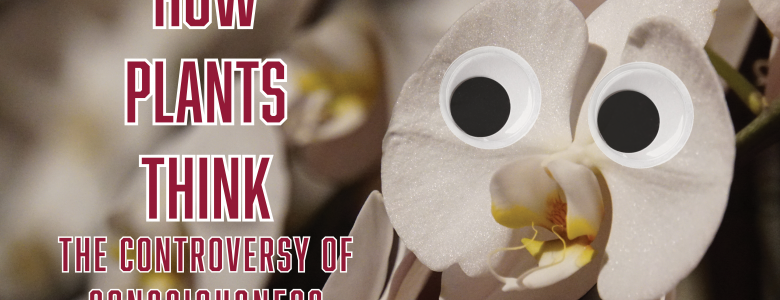October 20, 2019
How Plants Think: The Controversy of Consciousness

By: burgundy bug
How Plants Think: The Controversy of Consciousness
Source: The Burgundy Zine
Unencumbered by words and semantics, plants express themselves through their luscious leaves and abundant blooms, which are the result of carefully calculated survival tactics that almost seem “thought out.”
These physical characteristics can tell human observers a lot about how the plant is doing; whether it needs more water or sunlight, warmth or humidity, and so forth – but, plants don’t have eyes like we do. They don’t have brains like ours, yet research shows they possess intelligence.
How far does that intelligence go? Do plants “think?”
How Plants Think
“Intelligence (noun):
Intelligence | Lexico
The ability to acquire and apply knowledge and skills.”
In a 2016 Frontiers in Psychology review, researchers held plant behaviors and characteristics to approximately 70 different definitions of “intelligence.”
“Intelligent behavior requires assessment of different choices and taking the beneficial one,” the review says. “Decisions are constantly required to optimize the plant phenotype to a dynamic environment and the cambium is the assessing tissue diverting more or removing resources from different shoot and root branches through manipulation of vascular elements.”
“Environmental awareness likely indicates consciousness.”
Intelligence, Cognition, and Language of Green Plants | Frontiers in Psychology
While plants possess intelligent properties, such as environmental awareness and the ability to identify other plants, claiming that plants possess consciousness is still a widely controversial view in science.
A 2019 Trends in Plant Science opinion article says the idea that plants possess consciousness similar to animals is “highly problematic.”
“Proponents of plant consciousness have consistently glossed over the unique and remarkable degree of structural, organizational, and functional complexity that the animal brain had to evolve before consciousness could emerge,” the opinion article states.
Citing research from neuroscientist Todd E. Feinberg and evolutionary biologist Jon M. Mallatt in, “The Ancient Origins of Consciousness,” the opinion article criticizes the idea of plant consciousness due to plants lacking the minimal neurological basis of consciousness.
“Their findings make it extremely unlikely that plants, lacking any anatomical structures remotely comparable to the complexity of the threshold brain, possess consciousness,” the opinion article concludes.
However, intelligence can exist without consciousness – and we interact with this sort of intelligence every day through our “smart phones” and computers.
A 2017 Interface Focus study says plant intelligence is defined by its biological fitness – their ability to adapt and survive, which isn’t contingent upon having a brain.
The environmental awareness of plants allows them to respond accordingly in order to survive. Plants also display competitive and cooperative properties that are fundamental to thriving among other plants.
Not only can plants compete and cooperate with their neighbors, they can also identify which plants are their offspring, says a 2010 Journal of Experimental Botany review.
A 2013 Plant & Signaling Behavior review compared the attention to signaling, behavior, and stress response of plants to the attentive nature of humans and animals. Plants attend to light, temperature, and gravity, which is different from what mammals focus on, but nevertheless boils down to the same concept: attention.
Their environmental awareness isn’t exclusive to interacting with other plants, either. Plants respond to other life forms, such as animals and insects; they can detect the presence of pollinators, herbivory predators, and carnivorous plants can sense when prey are near, as discussed in a 2014 Journal of Experimental Botany review.
Additionally, a 2016 study in Current Biology demonstrates that venus flytraps have the ability to count to five. They recorded how the plant responded to one to 60 touches and found that two touches were enough to cause the venus flytrap to close, but only after the fifth touch did it begin releasing digestive enzymes. This may help the plant identify which insects are worth putting in the effort to consume.
In Conclusion
Until more research is conducted, plant consciousness will remain a widely controversial subject. Consciousness across all species itself is a controversial topic, as scientists from an array of fields argue whether consciousness is purely neurological, something mystical, or a combination of the two. We’ll save that subject for a rainy day.
However, plants display intelligent behavior vital to surviving, which, loosely falls into the definition of “thinking” when you consider that consciousness isn’t required to act intelligently.
“Thinking (noun):
Thinking | Lexicon
The process of considering or reasoning about something.”
Interested in having content featured in an upcoming blog post or issue of The Burgundy Zine? Head on over to the submissions page!
For all other inquiries, please fulfill a contact form.


